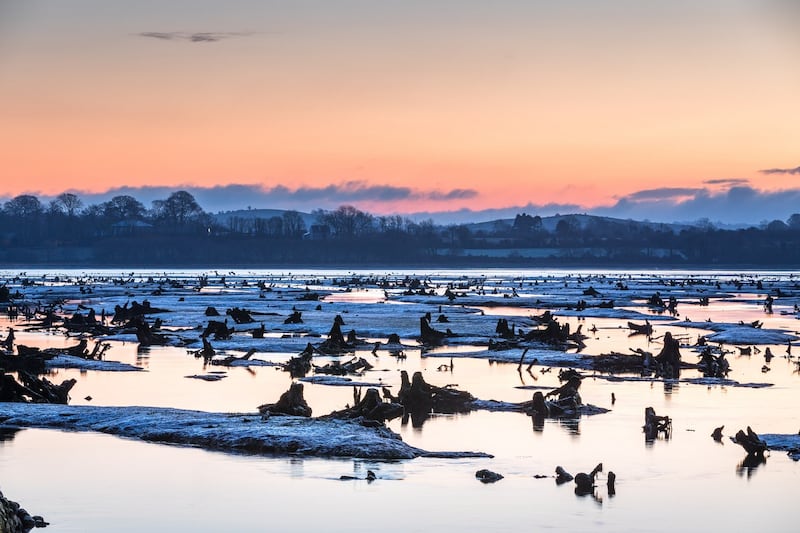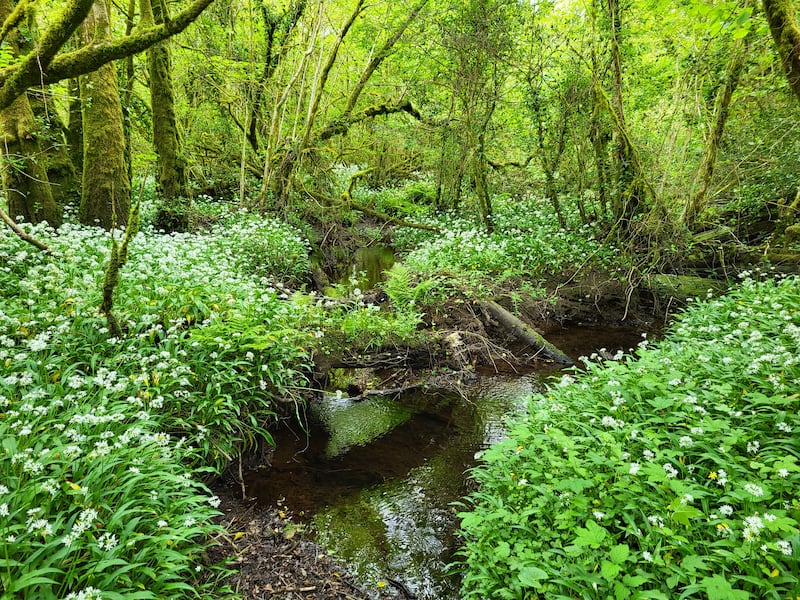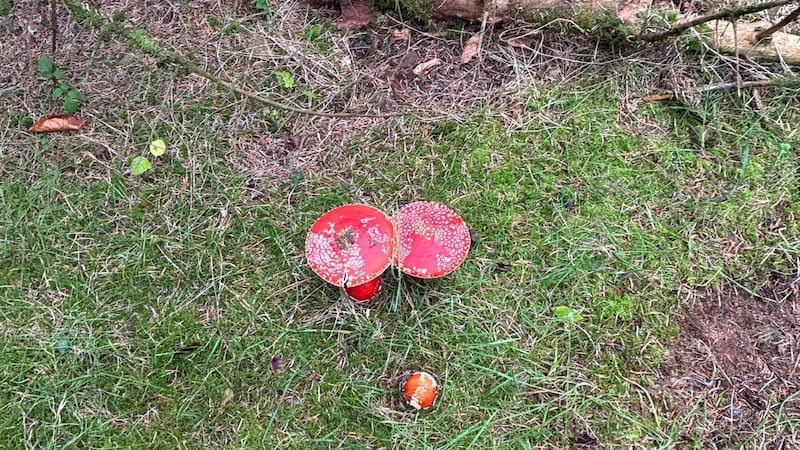The tiny remnants of Ireland’s native forests are among the most ecologically unique landscapes we have but within this cohort there is one place that stands out as truly exceptional. The Gearagh forest in Co Cork is, literally, one of a kind. Not only is there nowhere like it anywhere else in Ireland but there is nowhere like it anywhere in western Europe and it is among only a handful of inland, freshwater deltas globally.
To the scientist, the river Lee at the Gearagh is an “anastomosing” river, a place where water slows and splays into finger-like rivulets separated by innumerable hummocks and islets that are frequently flooded and clothed in dense vegetation.
Anastomosed rivers differ from braided rivers in their permanence; while fast flowing rivers can broaden into wide expanses of ever-shifting sandbars and gravel islands with multiple channels, the lattice of waterways at the Gearagh is little changed in decades, if not centuries or more. The result of this rare combination is a world that is half water, half land, where fish swim under the boughs of ancient trees and rare plants, dragonflies, freshwater sponges and molluscs thrive.
To many Irish ecologists, the Gearagh is well known from textbooks but is, at the same time, frustratingly out of reach. In 1907, the renowned naturalist Robert Lloyd Praeger led a party of botanists through the Gearagh on traditional flat-bottomed boats, remarking on the “abundance and luxuriance of the vegetation all around” and “the sense of mystery produced by the strange labyrinth”. But today the forest here is largely impenetrable, there are no paths or trails along which it can be explored and it can be glimpsed only fleetingly from the narrow road that skirts its edges.
RM Block
To the public meanwhile, the ancient forest scarcely exists at all. The popular walkway near Macroom which traverses the Carrigadrohid reservoir has all the trappings of a nature trail but this area is, in fact, a scene of ecological devastation.

In the 1950s, the ESB built a hydroelectric dam on the river Lee at the Gearagh and as part of the construction it felled half the forest that had stood there for millenniums. The stumps of once mighty oaks, ash and alder are still there as a haunting reminder of an act of vandalism that today would qualify as ecocide.
Local people who are familiar with this part of the Gearagh may never have set eyes on the actual forest that lies just to the west. But there are people who want to change that and, in bringing people to the forest, and showing them what a treasure it is, they are hoping it will ignite a plan to restore the Gearagh to its former glory.
Kevin Corcoran is from the Gearagh, and in his book Saving Eden (The Gearagh Press, 2021) he describes how his grandmother lived in the forest itself and held him as an infant as she watched her home being destroyed by the rising waters behind the new dam wall. He has long championed the restoration of the Gearagh, something he believes would best be achieved by removing the Carrigadrohid dam.
[ The Gearagh: One of Ireland’s least appreciated natural treasuresOpens in new window ]
The water levels would return to what they were, flooded in the winter, dryer in summer, allowing for the natural regeneration of the forest and its biodiversity under its own steam. He wants people to see the forest for themselves but he is also intensely aware of what a delicate system it is and one that does not lend itself to access in the normal way.
Corcoran talks about the dreaded meascán mearaidhe, which he describes a sense of disorientation that descends on the visitor so that they end up going around in circles. “The first problem people encounter when they come to the Gearagh is finding a way in” Corcoran tells me, “their second problem is finding a way out”.
Watercourses can flow both upstream and downstream, creeks vanish into dead ends, the sky is perpetually screened by a dense canopy of leaves and branches while after heavy rain the water can be waist high and dangerous.
Corcoran has brought me to the Gearagh with Harriet Burgess, a local Green Party candidate and barrister, to see the forest for myself. It didn’t disappoint. Although its scientific value is well documented, the overwhelming grandeur of the place is harder to describe.
Before long you are enveloped in an emerald haze, the smell is one of crisp humidity, mushroom mould and wild garlic while the flowing of shallow rivulets brings movement all around. With a guide like Corcoran I don’t fear the meascán mearaidhe but I can see why providing general access would not be possible. Many of the waterways are home to freshwater pearl mussels, some of which have lived for 100 years or more but would not survive being stepped on, even once. Access, were it to be provided, would need to be very carefully controlled and monitored.
In recent years Corcoran and Burgess have spearheaded a campaign to have the Gearagh designated as a national park, including setting up a petition that has more than 1,500 signatures. It is already a national nature reserve owned by the State (the ESB) as well as a special area of conservation (for the forest habitats) and a special protection area (for wetland birds) under European Union law.

Nevertheless, there is no management plan for the area, despite long-standing promises from the ESB. The area was once a thriving hub of overwintering ducks, but populations have crashed, something that may be attributed to how water levels are managed, as well as hunting. In May of this year, the ESB wrote to Burgess to say that hunting would no longer be permitted.
Like elsewhere, designations for nature conservation have not succeeded in protecting these special places and, with no legislation backing the creation of national parks in Ireland, I wonder how such a move will help to restore the Gearagh.
“Our principal aim is to see the lands of the Gearagh brought under the control of the National Parks and Wildlife Service [NPWS]” Burgess replies. “It’s farcical that the ESB is managing one of the largest, most ecologically important places in Ireland. The NPWS would have the expertise and the vision to realise what could be a programme of nature restoration of Europe-wide importance.”
Making it Cork’s first national park could then help to engage the local people as the ultimate custodians of the forest. “It’s important that the Gearagh is not too much of a secret,” says Burgess. “Very few people know this place exists, I’ve been lucky to see it and now I feel it’s a part of who I am and what it means to be from this park of Cork. In some parks in the US access to ecologically sensitive areas is strictly managed but it’s important that people get to see these places.”
As for the dam itself, Burgess believes that an alternative to removal would be for the NPWS to work with the ESB to manage the water levels to allow for natural regrowth of vegetation, thereby allowing the dam to continue operating. She has also received information from EirGrid which shows that the dam generates little electricity, with long periods when it is generating none at all.
Last year was a record year for dam removal across Europe, with 487 barriers removed from rivers in 15 countries. Dam removal helps to restore migration routes for fish such as Atlantic salmon and European eels, increases the resilience of river systems to the effects of climate breakdown and restores important river habitats such as the forest at the Gearagh.
No large dam removal has been undertaken in Ireland to date but with the potential for a national restoration plan (a commitment of the National Biodiversity Action Plan) and a sizeable nature restoration fund to be established from 2026, there is now a potential for large projects such as this to get under way.
“It’s like the fire at Notre Dame in Paris,” says Corcoran, “No one would have suggested that it be left as a burned-out ruin when it could be restored to what it was before. Why would we leave the Gearagh the way it is? It’s so important that we can tell a positive story and restoring the Gearagh could be the most positive of all ... there’s no downside.”
- Sign up for push alerts and have the best news, analysis and comment delivered directly to your phone
- Join The Irish Times on WhatsApp and stay up to date
- Listen to our Inside Politics podcast for the best political chat and analysis
















